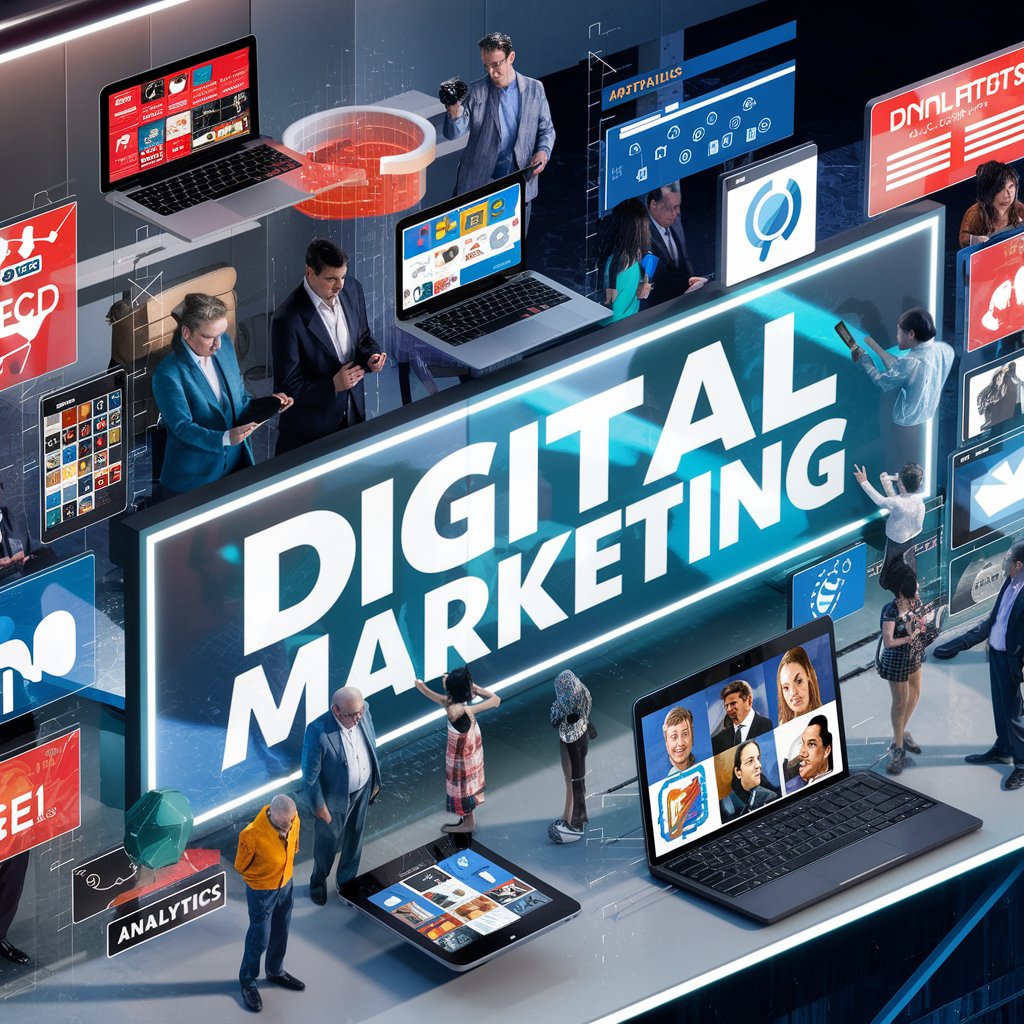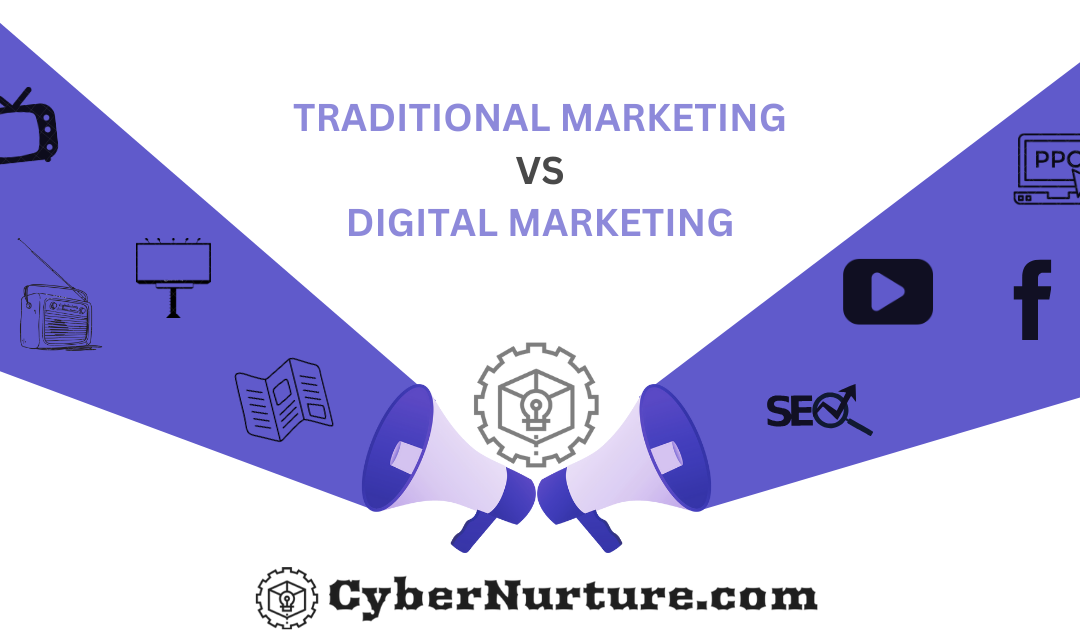Traditional Marketing vs. Digital Marketing: Compare traditional methods like print ads and TV with digital tactics like social media and SEO to see which suits your needs best.
Introduction
Marketing has become one of the most significant pillars that define the strategies in the growing field of business. Marketing has greatly developed over the years, especially with the help of the newest technologies of the digital age. Traditional marketing, which once dominated the landscape with methods like print ads, television commercials, and direct mail, has now been challenged by the rise of digital marketing. Social media, SEO, e-mail marketing, etc., that falls under the category of digital marketing provides a new platform on which businesses can involve their public.
In this blog we will explore the key differences between traditional and digital marketing, delving into their pros and cons. We will also discuss the reasons that have made companies switch from traditional marketing to digital marketing and provide insights into which approach is more effective in the current scenario.

What is Traditional Marketing?
Traditional marketing means marketing and communicating with customers using techniques that were in use before the introduction of the Internet and mobile marketing. Offline marketing refers to different types of marketing strategies such as newspaper and magazine adverts, TV and radio adverts, direct mailing, billboards, and those that use events and trade shows to market a product or service.
Traditional marketing is known for its broad reach. Traditional marketing is usually more expensive compared to today’s advanced technologies making it less effective. It is useful for creating brand reliability and reaching the people who can be less active on the Internet.

Pros of Traditional Marketing:
Longevity: A newspaper or magazine advert may last longer than a digital one which might appear for only a few days offering constant visibility.
Broad Reach: Television and radio for instance are able to cover a large audience within a short span which makes them suitable for large brand promotion campaigns. They are useful because they can target people based on the popularity of the region and therefore the message would be received by broader people.
Local Targeting: Traditional marketing is very effective for those companies which are targeting the local market. Billboards and newspapers help businesses make their sales appeal directly to the local community which in turn helps them build their strong local representation.
Established Credibility: Traditional marketing channels such as TV and print media are often seen as more credible due to their long-standing presence in the market. This is because consumers believe that they see their ads in reputable newspapers or even on well established television networks.
Face-to-Face Interaction: Methods like trade shows, events, and direct selling allow for personal interaction which helps in building a strong relationship with customers.
Cons of Traditional Marketing:
High Costs: Traditional marketing is often costly, especially for small businesses which are slowly entering the market. Television and radio ads, prime placements in newspapers, and magazines, among others, are expensive and therefore not easily affordable by many businesses.
Limited Audience Interaction: This is especially so since traditional marketing is mainly a push type of communication where information is only sent in one direction from the company to the consumer. Compared to digital marketing, it does not have the same level of interactivity that allows businesses to get in touch with their target markets and receive feedback.
Difficult to Measure ROI: It is quite difficult to accurately measure the efficacy of traditional marketing campaigns. Unlike digital marketing where it can get statistical analysis of the results, traditional marketing still uses estimations, thus it is difficult to calculate return on investment (ROI) accurately as is done in digital marketing.
Decreasing Effectiveness: This is because, as the number of consumers spend more time online, the conventional marketing methods have been found to be less efficient.
Limited Targeting Options: Digital marketing is way better than traditional marketing in terms of its ability to segregate specific audiences. It does connect with a large number of consumers but it is not so efficient in segmenting the market and targeting small and particular groups of consumers.
What is Digital Marketing?
Digital marketing is a marketing communication process that uses technologies to promote products, services, or brands to a target audience. Marketing communication tools involve the use of digital tools including; search engine marketing, social media marketing, email marketing, websites, and applications on the mobile. Some of the commonly used strategies in digital marketing are SEO, content marketing, social media marketing, PPC, influencer marketing, and email marketing.
Digital marketing enables companies to access clients from all over the world, focus on certain audiences, and to interact with them instantly. It offers measurable results through analytics, enabling businesses to track the effectiveness of their campaigns. Since consumers are, more and more, spending their time on the internet, digital marketing has emerged as one of the critical ways for businesses of all sizes to reach their target customers and create awareness of their products and services as well as motivate people to buy products and services.
Wanted to know more about Digital Marketing and its different concepts ? Here is the link

Pros of Digital Marketing:
Cost-Effective: Digital marketing is cheaper compared to the traditional marketing techniques. Especially, small businesses can begin the promotion with a small budget, using such instruments as social networks and e-mail marketing to share information with the target audience.
Targeted Advertising: The advantage of looking for audiences and viewers on digital platforms is that one can target them using demographics, interests, behaviors, etc. This helps in directing marketing communications to only those people who can be interested in the product or service being marketed hence increasing the efficiency of campaigns.
Measurable Results: Using digital marketing, businesses can track and analyze campaign performance in real time. By using Google Analytics and the insights offered by social media, one can get comprehensive data to improve and maximize the return rate of investment (ROI).
Global Reach: The use of digital marketing means that organizations can reach audiences in other countries and thus offer a chance for the growth of new markets.
Interactive Engagement: Digital marketing enables marketers to communicate directly with clients. By using social media, blogs, and e-mail as some of the communication techniques businesses can easily communicate with their clients and gain more insights from the feedback gathered.
Cons of Digital Marketing:
High Competition: The internet is today filled with competition, and this makes it very difficult for organizations to gain a competitive edge. Writing engaging and targeted content involves creativity and proper analysis of the target audience.
Technology Dependency: One of the drawbacks of digital marketing is that it highly depends upon the technology, which becomes a disadvantage for the business that may not afford up-to-date tools or the tools that require technical competency. Technical factors can also affect the campaigns.
Privacy Concerns: Targeted advertising has also become an issue regarding the use of personal information collected by customers. Failure in managing data can result in legal problems and negative consequences to a company’s image.
Constant Evolution: The digital marketing space is evolving with constant updates in the algorithms, trends, and strategy. It is required to keep up with constant changes.
Requires Consistent Content Creation: Digital marketing strongly depends on up-to-date content. The creation of frequent, valuable posts may be time-consuming and costly, especially for smaller companies and organizations.
Wanted to study digital Marketing in Chennai? Here is the quick Guide
Conclusion:
In conclusion, it is possible to state that traditional and digital marketing are two successful methods that have their strengths and weaknesses. Traditional marketing is good at giving tangible, believable communication points and is more effective in reaching local consumers, but they come with a higher cost and are difficult to quantify. On the other hand, digital marketing presents many advantages through cost coverage, and measurement, enabling it to be much more flexible and aligned with consumer behavior.
Hence, the best approach depends on the specific goals and context of the business. A combination of both digital and conventional marketing strategies can offer an ideal solution since it can access and utilize the strengths of both types of marketing with precision and efficiency. By integrating these approaches thoughtfully, companies can navigate the modern marketing landscape and achieve sustained success.

